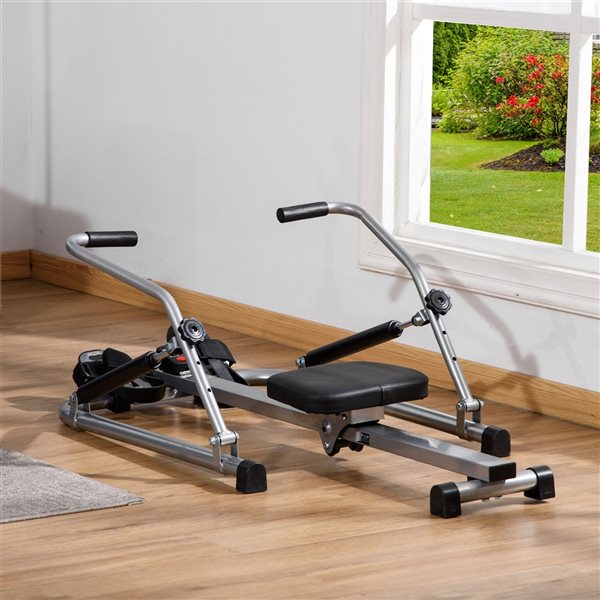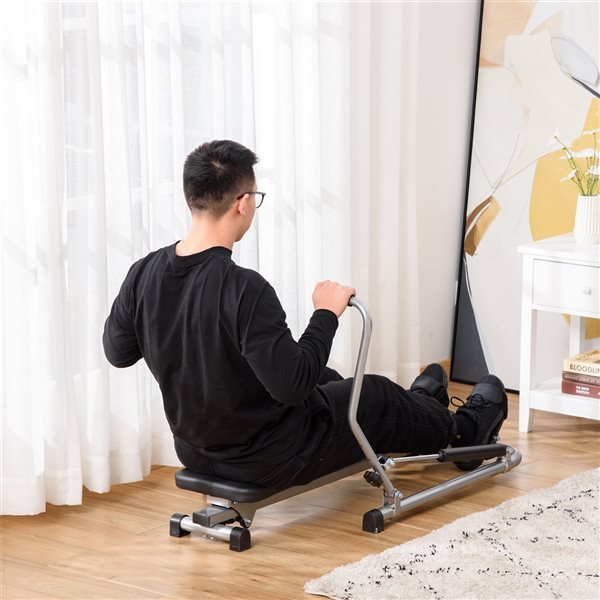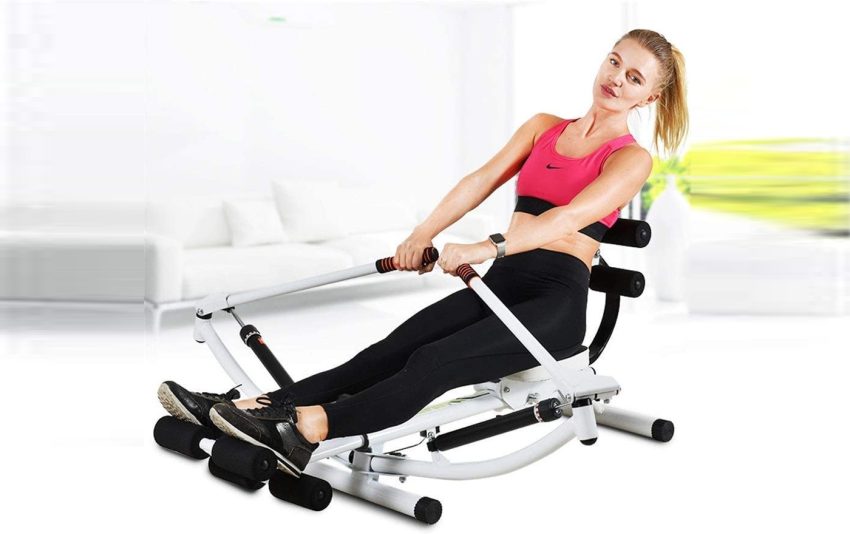If you’re looking to enhance your fitness journey or searching for the perfect workout equipment for your home gym, a rowing machine could be just the answer.
Rowing machines are incredible all-in-one fitness tools that can provide a robust cardiovascular workout and target various muscle groups. Among the numerous types of rowing machines available on the market, hydraulic rowers stand out for their unique features and functionality.
Hydraulic rowers, or hydraulic resistance rowing machines, are a particular breed of rowing machines that combine efficiency with practicality. They have established a reputation for being compact, budget-friendly, and adaptable to various fitness levels and needs. They’re also known for their quiet operation, making them an excellent choice for home or office workouts.
Understanding Hydraulic Rowers
The mechanism of hydraulic rowers is fascinating. These machines use hydraulic cylinders attached to the handles to generate resistance. As you pull the handles, you push fluid or air within the cylinders, creating resistance. The intensity of your workout on a hydraulic rower largely depends on this hydraulic resistance.
One of the standout features of hydraulic rowers is the ability to adjust resistance levels. This gives you the option to customize the intensity of your workouts. Want to go for a light workout? Turn down the resistance. Looking to challenge yourself? Crank up the resistance! It’s all in your hands, making your rowing session as gentle or intense as you need it to be.
Additionally, hydraulic rowers are loved for their compact size. This is a huge advantage if you live in a small apartment or have a shared living space. These machines are typically smaller than other rowing machines, making them easy to store away when not in use. Most models are lightweight, and some even have wheels, allowing you to move them around effortlessly.
Stay tuned as we dive deeper into the benefits and potential drawbacks of hydraulic rowers and how they compare with other types of rowing machines.
Benefits of Hydraulic Rowers
While all rowing machines are great for overall fitness, hydraulic rowers bring a unique set of benefits to the table. First off, from a physical perspective, these machines are excellent at targeting specific muscles. When you perform a rowing stroke on a hydraulic rower, you engage your arms, legs, back, and core. The adjustable tension allows you to focus more on either upper or lower body muscles, offering a versatile workout experience.
The second major advantage of hydraulic rowers is their affordability. Generally, they tend to be more cost-effective compared to other types of rowing machines. This makes them a fantastic option for fitness enthusiasts who are working with a tighter budget but don’t want to compromise on quality and effectiveness.

As mentioned earlier, the compact size of hydraulic rowers is another major selling point. Not everyone has the luxury of a spacious home gym, and these machines are perfect for smaller spaces. They can fit into most rooms and are often foldable for easy storage.
Drawbacks of Hydraulic Rowers
However, just like with any fitness equipment, hydraulic rowers do have a few potential downsides. Firstly, they do not mimic the natural rowing motion as closely as water or air rowers do. This means the stroke may feel less smooth, and the workout can feel somewhat different from rowing on water.
Noise is another factor to consider. While hydraulic rowers are generally quieter than air rowers, they can still produce some noise due to the operation of the hydraulic cylinders, especially at higher resistance levels.
Remember, every piece of exercise equipment has its pros and cons. It’s about finding the right fit for your needs, preferences, and environment. In the upcoming sections, we will compare hydraulic rowers with other types of rowers to help you make an informed decision.
Hydraulic Rowers vs. Water Rowers
When comparing hydraulic rowers to water rowers, a few key differences emerge. Water rowers offer a more authentic rowing experience, providing resistance that closely resembles the feeling of rowing on water. This leads to a smoother and more natural rowing motion. Additionally, the soothing sound of water can add to the overall enjoyment of the workout.
Hydraulic rowers, on the other hand, offer adjustable resistance, allowing you to customize the tension to your preference. They also tend to be more compact and affordable than water rowers. However, they do not provide as natural a rowing experience.
Hydraulic Rowers vs. Air Rowers
Air rowers, similar to water rowers, offer a more realistic rowing experience, as the resistance is determined by the rower’s pace – the faster you row, the higher the resistance. They also provide a smooth rowing stroke but can be quite noisy due to the spinning flywheel.
Hydraulic rowers are quieter, offer adjustable resistance, and are more compact and affordable. However, the rowing stroke can feel less natural due to the operation of the hydraulic cylinders.
Hydraulic Rowers vs. Magnetic Rowers
Magnetic rowers provide a very smooth and quiet workout due to their magnetic resistance mechanism. They also offer adjustable resistance levels and a fairly natural rowing motion. However, they tend to be larger and pricier than hydraulic rowers.
Hydraulic rowers stand out with their compact size, affordability, and adjustable tension. Yet, they may lack the natural rowing feel that magnetic rowers provide.
In summary, while hydraulic rowers may not provide the most natural rowing experience, they shine in their compactness, adjustability, and affordability, making them an excellent choice for many fitness enthusiasts.
Buying Guide for Hydraulic Rowers
When purchasing a hydraulic rower, there are several things to consider:
Quality of Construction:
A well-built hydraulic rower should feel sturdy and durable. It should handle intense workouts without any signs of instability.
Adjustable Resistance:
The ability to adjust the tension in the hydraulic pistons is one of the rower’s primary benefits. Check whether the adjustment is easy and offers a good range of resistance levels.
Comfort:
Look for a rower with comfortable seating and handlebars. Non-slip pedals with straps are a must for safe rowing.
Size:
One of the appealing benefits of a hydraulic rower is its compact size, making it an excellent fit for smaller workout spaces. However, don’t overlook the importance of ensuring the machine’s size is compatible with your personal height and weight.
The rower should be long enough for your legs to extend fully, and the seat must comfortably support your weight. This way, you’ll have a piece of equipment that not only fits your space but also fits you perfectly.
Price:
Hydraulic rowers can vary significantly in price, so consider your budget. Generally, they are less expensive than other rowing machines, making them a great entry-level option.
Summary

Hydraulic rowers stand out as a unique piece of exercise equipment. Their unique combination of compact size, adjustable resistance, and affordability make them a desirable choice for many individuals.
While they may not deliver the most natural rowing experience, they still offer a fantastic workout, especially for those looking to target specific muscles or working with a smaller workout space or budget.
It’s crucial to remember, as with any exercise equipment, the ‘best’ choice is often subjective and depends largely on an individual’s unique needs, goals, and constraints.
While hydraulic rowers may not suit everyone, they offer a compelling option for many, especially those just starting their rowing journey or working with limited space. Their benefits, combined with their lower cost, make them a worthwhile contender in the world of rowing machines.
